LAKE NORDEN, S.D. – Dairy farmer Rodney Elliott stands in a small room where part of his $12 million robotic milking system is doing its job.
The robotic system is located inside a huge new barn on Elliott’s farm northeast of Lake Norden and is one of only a handful of fully robotic milking operations in South Dakota.
As the system functions flawlessly around him — feeding, watering, bedding, washing and milking hundreds of cows day and night with nary a human touch — Elliott watches with a mix of excitement and awe.
“My mother milked cows with just a bucket and a stool,” Elliott said, his Irish accent rising as in song. “We’ve sure come a long way, haven’t we?”
Elliott, 57, is the owner of Drumgoon Dairy, one of the largest, most successful and now most technologically advanced dairy farms in South Dakota.
After years of study and hesitance, Elliott made the move into robotic milking in mid-2020 and his first robotic systems launched in late January 2021.
The system seeks to make milking easier and more efficient for farmers but also for cows.
In the system designed by Swedish agricultural manufacturing company DeLaval, about 75 cows are assigned to each milking machine.
Within each robotic system, cows are trained to move on their own through a large rectangular pen split into two sides and outfitted with a series of one-way gates separating areas where they are fed, watered and rested before entering a small gated area where milking takes place.
The system is similar to traditional milking operations except cows are housed very close to where they are milked, they move on their own through the process without human guidance, and sophisticated robots perform the actual milking. Cows can be milked up to three times a day.
Cows eat silage placed in reach of their pens and drink water until fully sated. The cows then walk around the end of the rectangle through one-way gates to resting areas where they bed down in sand until their udders are filled with milk. At that point, they feel the need to be milked and make their way one by one to a holding or “perching” area where they await their turn to enter a gated milking chamber known as the “box.”
After a cow enters the “box,” the robotic milking begins.
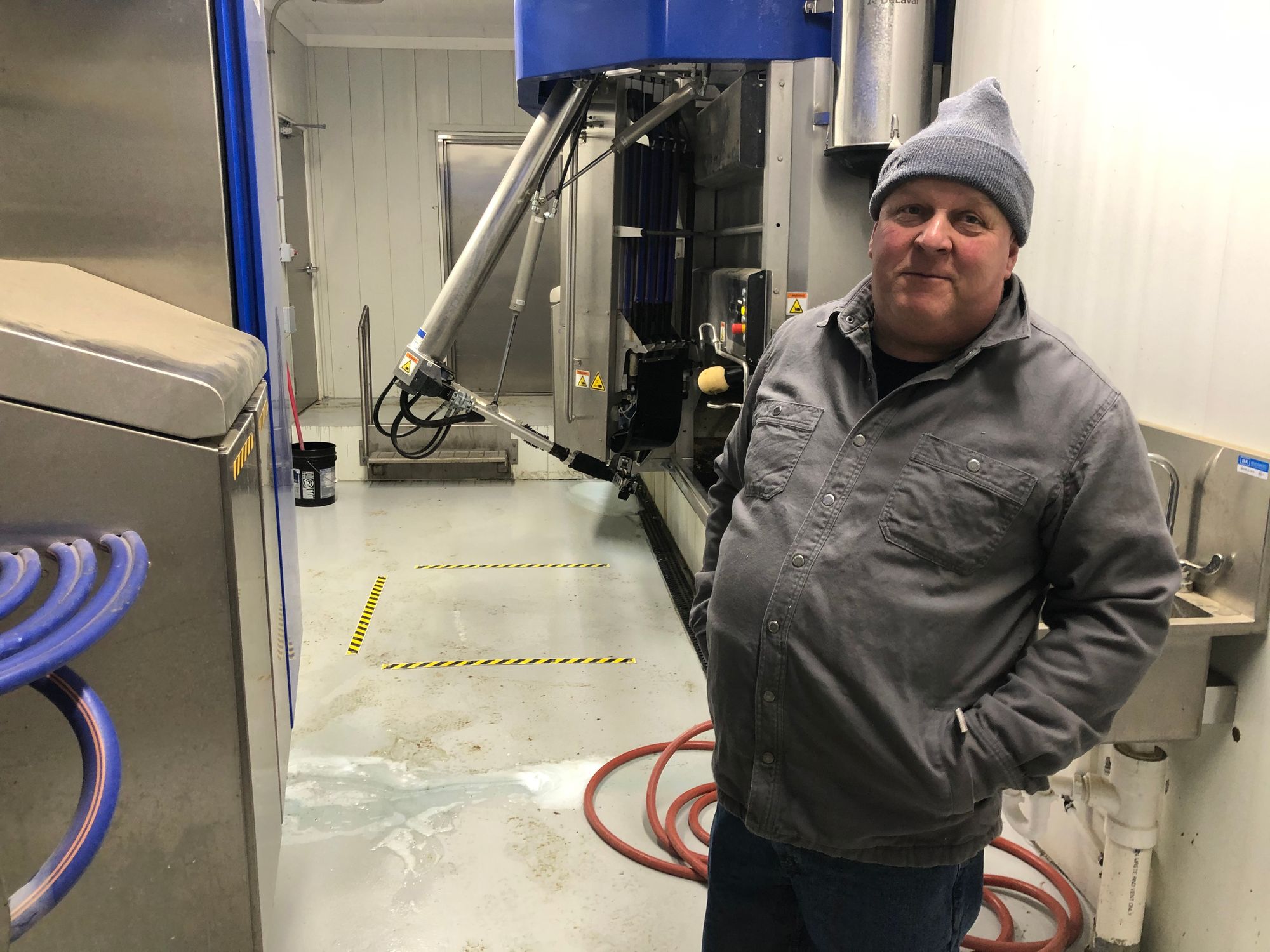
‘The cow can milk herself’
Once secure in the box, a robotic arm affixed with a $150,000 high-definition camera swings beneath the cow and its udder full of milk. The camera locates the cow’s four teats, and the robot arm uses a device to wash and dry the teats one by one.
Now that the cow is ready for milking, the robot arm swings back to the milking machine, grabs a suction cup and, with the help of the camera, attaches it to a teat. Once all four cups are attached, milk begins to flow through flexible tubes that carry it to a nearby tank. To prevent any interruptions in the flow of milk, the robotic arm sweeps up the four tubes and holds them clear of the cow’s feet during milking.
All the while, a sophisticated computer that has identified the cow by number records how much milk is being collected from each teat. The computer knows the age of the cow, how long she has been milking, whether she has been bred and a host of historical information about when she has been milked and how much milk she produced. It records the temperature and other characteristics of the milk.
When the cow runs dry, the robotic arm removes the cups and returns them to the milking machine, where they are washed clean. The robotic arm swings beneath the cow once again and uses the camera to locate each bare teat, which is then given a quick burst of blue disinfectant.
Just then, a gate in front of the cow opens and she walks forward, making room for another cow that soon enters. During this transition, the robotic arm moves the camera to a sponge and gives the screen a splash of water, a rub on the sponge and and a blast of air to clean and dry it.
After a milked cow has left, a gate closes behind it. A gate at the entry to the box swings open to allow in another cow, and the milking process repeats.
During the six-minute milking process, neither Elliott nor any other farm worker has touched the cow or the milking machine. No one had to position the cow, move her in or out of the machine, pull her back to a pen for food and water, attach any milking cups or shovel any manure. Wastes from the cows are scraped by an automatic mechanism that moves the wastes to a collection pipe that leads to a clay-lined earthen pit outside the barn.
After being milked, cows walk through a container of solution that cleans their hooves, and they can lean against a large vertical robotic brush that cleans their hides and scratches any itches.
“It’s called a voluntary milking system and it basically means that the cow can milk herself,” Elliott said. After milking, “she goes back to feed, back to her stall, back to water, then lounges around in a nice sand bed until she feels the need to be milked again.”
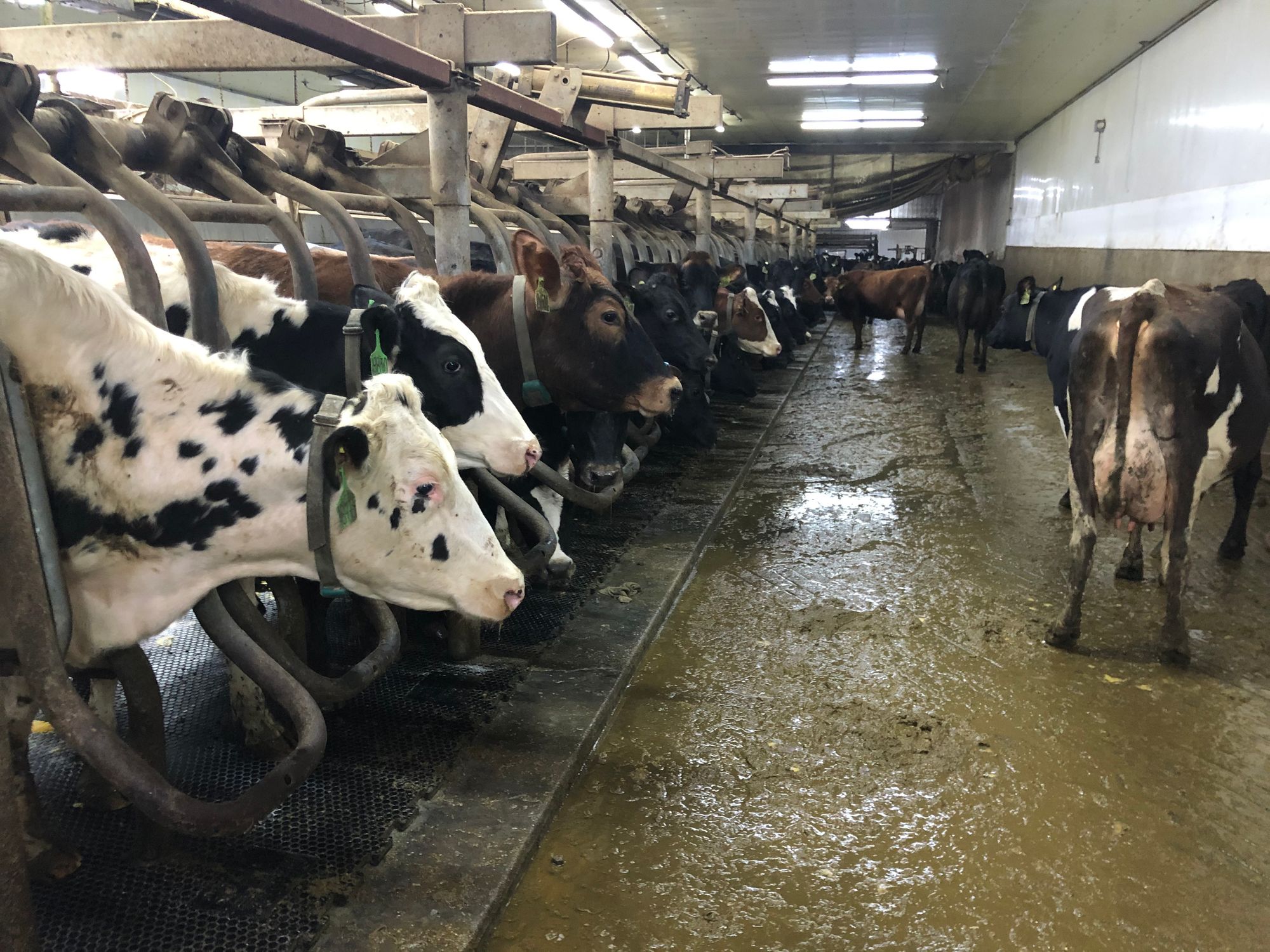
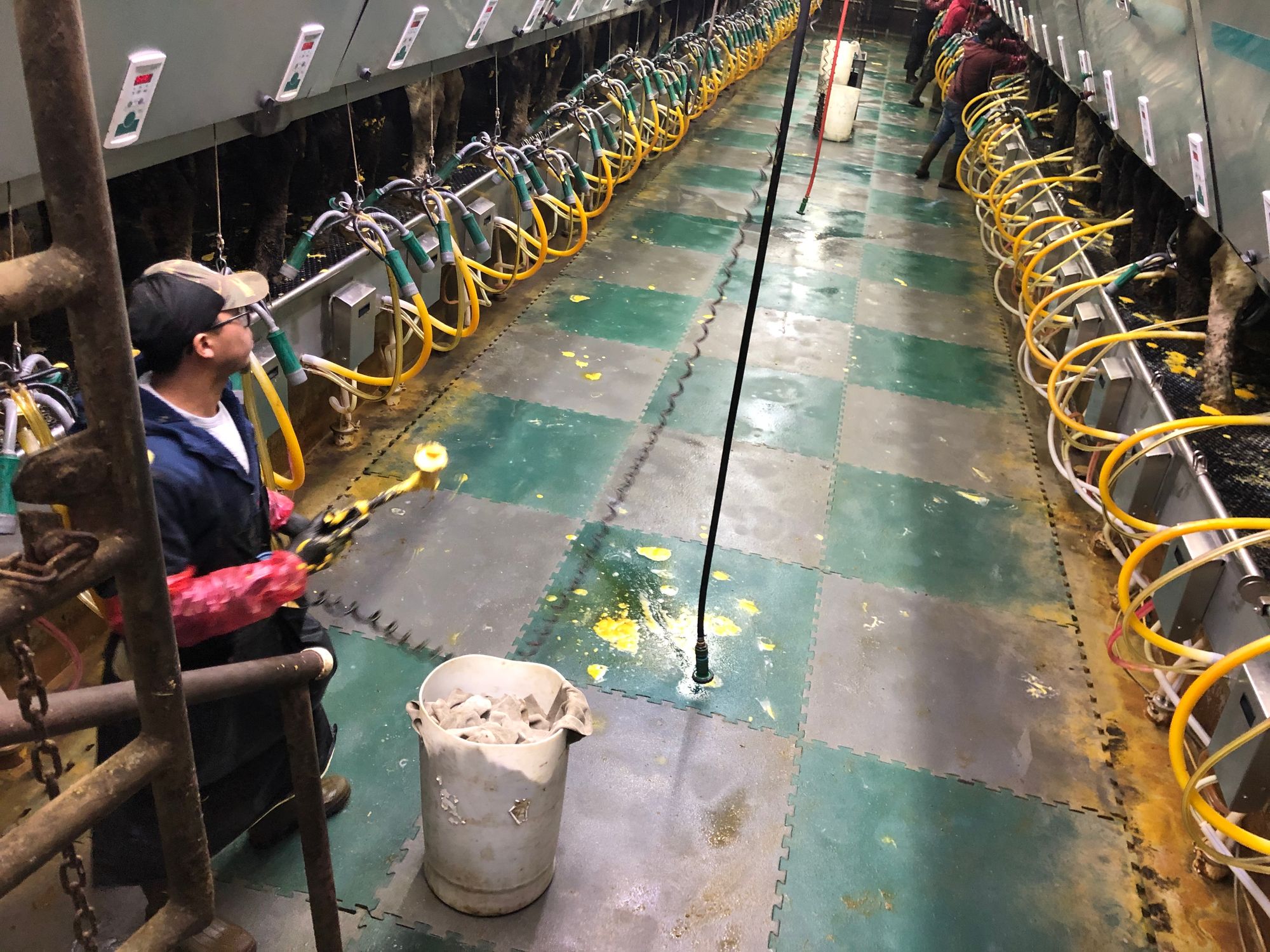
Interest in automation rising
Dairy farming and milk collection have undergone a series of technological improvements and increased automation in recent years, said Marv Post, president of the South Dakota Dairy Producers Association.
In most modern dairy farms, for example, cows are backed into pens on a concrete platform that has a channel below it where workers handle the cows, cleaning their teats, attaching milking machines and monitoring the operation. The machines automatically collect the milk and carry it to holding tanks before it is loaded onto trucks. Most data collection on cows and milking is done through computers.
Post said he first learned about robotic milking 15 or 20 years ago at a dairy expo in Wisconsin, and was skeptical the process could catch on in South Dakota. He has been pleasantly surprised, he said, by its implementation and effectiveness so far in improving productivity and creating a better living environment for the animals.
“These barns are amazing,” Post said. “I’m still amazed at how these cows will walk up, get milked, and the next one is ready to come in.”
Post said he and other dairy industry leaders are trying to find funding to support educational programs at South Dakota State University that will train the next generation of farmers in robotics and further automation of dairies.
“We want to support research and get students trained in how the dairy industry is today, but also on what is coming in the next 10 years or more.”
The dairy industry in South Dakota is in a mode of rapid expansion as existing dairies expand and new dairies have arisen to meet a growing need for milk by the burgeoning cheesemaking industry in the state.
Tom Peterson, director of the state dairy association, said the shift to robotic dairy farming is likely to be slow across the industry in South Dakota, mostly because of the large investment needed.
“It really has to fit their mode of farming and it’s a significant investment, so it all has to pencil out for that to be the route,” Peterson said.
Yet Peterson added that more farmers may start to consider adding robotics once they realize the production, efficiency and data-collection benefits. “With the amount of data mining available through robotic milking, it enhances milk quality, it enhances animal care and has just so much capability to identify any issues far in advance.”
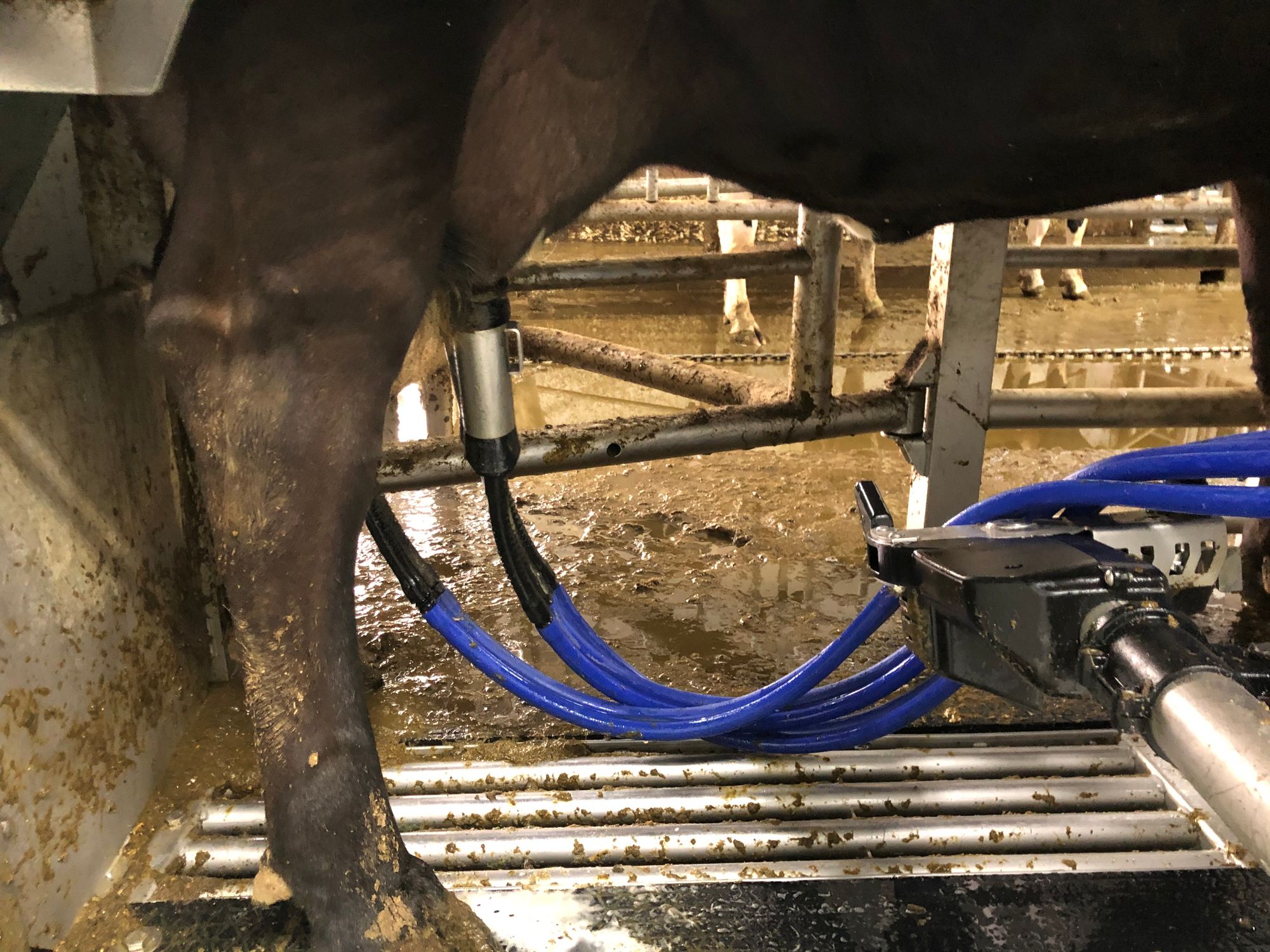
Robotics part of growth pattern at Drumgoon
Elliott is a native of Northern Ireland who moved to South Dakota to farm in 2006; his farm is named for the rural region of Northern Ireland where he grew up on a small farm and owned 140 cows before moving stateside.
Elliott runs the dairy operation and several associated businesses with his wife, Dorothy, and his two sons (he also has an adult daughter). Elliott served as the general contractor on construction of the new barn and installation of robotics. He said some fine-tuning of the operating robotics and new barn are underway even as more robotic milking stations are being built.
The financial goals of the robotics are to reduce employee costs and improve milk production of each cow and his herd as a whole, which have in fact occurred since the robotics launched in January 2021. Elliott also sees robotics as a way to improve living conditions for his cows, which live in greater comfort, move about on their own and are handled less amid automation.
Cows in the robotic system have already shown an increase in milk production, he said. His goal was to increase per-cow daily milk production to 75 pounds per cow, and already he has seen 82 to 83 pounds per day from robotic milking. His robotic operation will eventually include about 1,400 cows, still a fraction of his overall operation that has about 6,000 milking cows.
The long-range wish for Elliott is that robotic milking will build a bridge to a brighter future in which his children and other young farmers in South Dakota can enter the dairy industry without the nearly 24/7/365 work and worry that Elliott and other dairy farmers have undergone for generations.
“I feel strongly that the future is going to be trying to find young people who want a better lifestyle than this industry has afforded them so far,” Elliott said, “so they don’t have to do the physical, overnight work because this facility never shuts down.”
Elliott’s cell phone, its ringer sounding like a train whistle, is a constant companion that keeps him on his toes. The phone holds an application tied into the robotic system that alerts him immediately if any issues arise.
On a recent day, he awoke at 3 a.m. to help solve a problem in a dairy barn, then returned to bed before waking at 5:30 a.m. to start his actual workday. He sometimes stays engaged in dairying and running his other businesses until well after dark.
Elliott has a quick wit, an unassuming appearance and a self-deprecating sense of humor that belie his farming and business acumen. He’s known to baby talk his cows to encourage compliance, and in a light moment he jests that, “I once heard a dairy farmer in Ireland say the dairy industry is for the industrious in the world and not the intelligent, so I thought it was a perfect industry for me.”
In fact, the entry into robotics is only the latest of Elliott’s many ventures that have resulted in a truly vertical integration of his businesses, which he said has resulted in $20 million in gross annual revenues and a bank valuation of his overall operation at $40 million.
He grows feed for his cows on 1,200 acres of farmland, has part ownership of a large cow-breeding operation in Kansas that supplies him with milking stock, and recently sold a million pounds of gravel off land he bought that was not suitable for crop farming.
He took a step in a new direction last year with the purchase of the Alsville Crossing truck stop, convenience store and restaurant that sits on a busy intersection of U.S. 81 a couple of miles south of his farm. Elliott put his son and daughter-in-law in charge of the modern facility that just happens to be a few miles from Lake Norden, where the Agropur cheese plant tripled capacity in 2019 and is now supporting hundreds of truck trips daily.
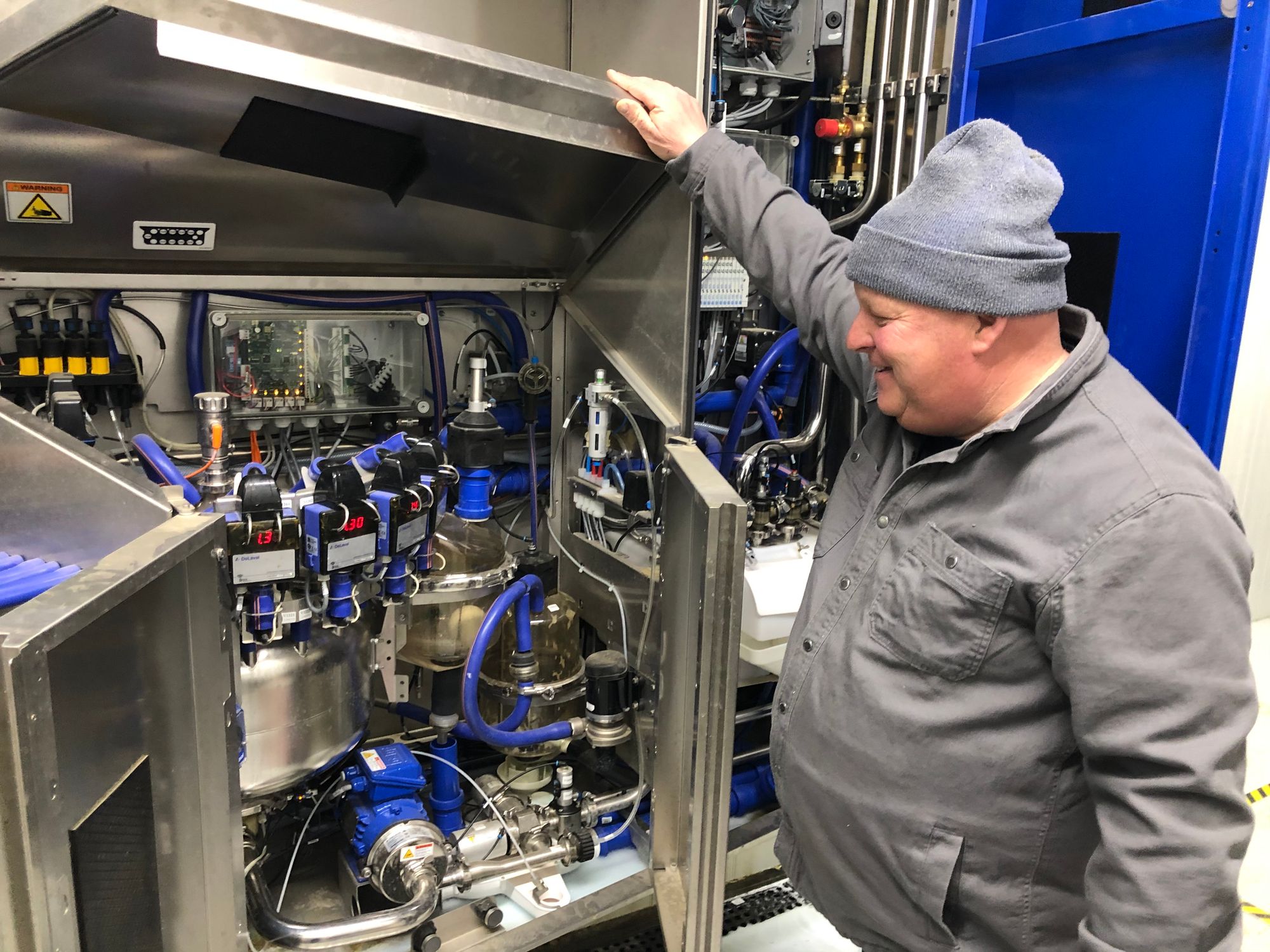
Elliott is committed to running a high-quality operation with a strong focus on proper treatment of animals and people, including his roughly 50 employees.
He pays for travel and housing for many of his immigrant laborers who are given training in dairying and farming techniques. He promotes employees from within and has helped several start their own operations. Two years ago, he ended the use of all antibiotics in his animals.
He also takes great care in the cleanliness of his farm and how wastes are handled. Elliott said he considers his South Dakota Concentrated Animal Feeding Permit and water-use permit to be a privilege, not a right, that entrusts him with protecting the environment as much as possible.
Upon reflection, Elliott said he sometimes worries that his expansions have brought him to “the point where the dairy farm is running you instead of you running the dairy farm.”
He hopes to buy a boat this summer to cruise nearby Lake Poinsett and will try to play more golf and make more visits to see his children and growing gaggle of grandchildren.
“I’m a crazy person; that’s the best way to describe it,” Elliott said. “I enjoy the people part of the operation and the strategizing, but what you could say is that ‘this guy just really loves cows.’”



